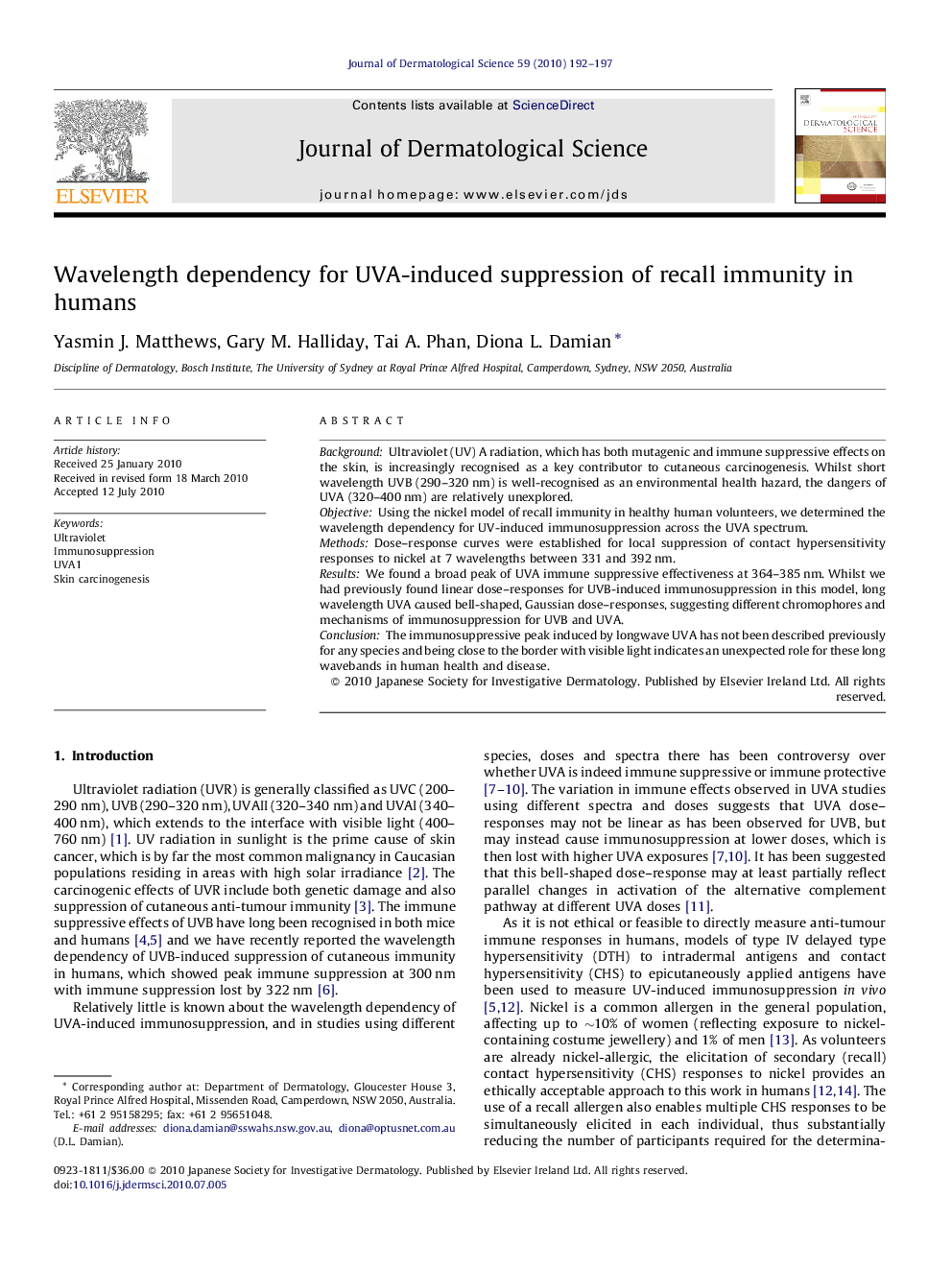| Article ID | Journal | Published Year | Pages | File Type |
|---|---|---|---|---|
| 3213678 | Journal of Dermatological Science | 2010 | 6 Pages |
BackgroundUltraviolet (UV) A radiation, which has both mutagenic and immune suppressive effects on the skin, is increasingly recognised as a key contributor to cutaneous carcinogenesis. Whilst short wavelength UVB (290–320 nm) is well-recognised as an environmental health hazard, the dangers of UVA (320–400 nm) are relatively unexplored.ObjectiveUsing the nickel model of recall immunity in healthy human volunteers, we determined the wavelength dependency for UV-induced immunosuppression across the UVA spectrum.MethodsDose–response curves were established for local suppression of contact hypersensitivity responses to nickel at 7 wavelengths between 331 and 392 nm.ResultsWe found a broad peak of UVA immune suppressive effectiveness at 364–385 nm. Whilst we had previously found linear dose–responses for UVB-induced immunosuppression in this model, long wavelength UVA caused bell-shaped, Gaussian dose–responses, suggesting different chromophores and mechanisms of immunosuppression for UVB and UVA.ConclusionThe immunosuppressive peak induced by longwave UVA has not been described previously for any species and being close to the border with visible light indicates an unexpected role for these long wavebands in human health and disease.
